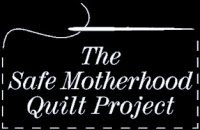In a recent report presented to the American College of Obstetricians and Gynecologists, Dr. Gary Ventolini revealed that the emergency cesarean section rate at his large community hospital was reduced in half over a three-year period. Ventolini's hospital achieved this drastic improvement simply by modifying their oxytocin infusion protocol. An appropriate reduction in the amount and frequency of artificial oxytocin (or Pitocin) injection for induction or augmentation of labor directly resulted in decreasing emergency c-sections.
I will be strongly suggesting a similar protocol modification to the Sarasota County Public Hospital Board in the coming weeks. SMH's current Nursing Department Policy on Induction or Augmentation of Labor states that the specific rate and ration of infusion must be given in the physician's orders. Should the physicians' preferred rates of induction be reduced--for example, from 2 by 2 units every 20 minutes to 1 by 1 unit every 30 minutes, as was the case in Ventolini's hospital--I expect we would begin to see similar results here in Sarasota.
There are several medical reasons that warrant appropriate induction or augmentation of labor by artificial oxytocin. These include chronic maternal medical conditions (diabetes, hypertension, renal disease), fetal compromise (IUGR, alloimmunization, abnormal fetal testing), gestational hypertension or preeclampsia, post-term pregnancy, premature rupture of membranes or preterm premature rupture of membranes, placental abruption, chorioamnionitis, and fetal demise. Taking these indications into consideration, the World Health Organization states that no geographic region should have labor induction rates exceeding 10%. Current induction rates in America over 40% tell us that many women are being induced for non-medically indicated reasons.
Induction carries with it many risks. Induced patients are twice as likely to give birth via c-section (evidenced by the indication that induction requires a physician with c-section privileges on premises). Should they give birth vaginally, they are more likely to have vacuum or forceps assisted deliveries. With all labor inductions, uterine hyperstimulation is a major risk, leading to a large increase in the need for pain medication, potential fetal distress and further obstetric interventions.
Here are ten ways to avoid labor induction, from Lamaze International's Institute for Normal Birth.
Monday, July 6, 2009
Reduce Inductions, Reduce C-Section Rates
Labels:
babies,
c-sections,
community,
education,
health,
health care,
hospital birth,
induction,
maternity care,
news,
research
Subscribe to:
Post Comments (Atom)




















Great job. Hospitals can and do help shape the type of care the patient's get. Their hands are not tied- they can and rightfully should influence how the providers in their walls behave.
ReplyDeletethe increase by 1 ratio is actually what ACOG recommends. The current trend over the last several years is to increase pitocin by doubling every 15-30 mins, so you go from 2-4-8-16-32. 30's is the top dosage. Most women will be adequately induced at 8-12-16.. reducing the amount of pitocin once an effective labor pattern has been established would also be appropriate to reduce the emergency c/s rate..
ReplyDeleteI'm so pleased you are advocating for more normal birth here in our community. A protocol modification like this seems like a very attainable step in the right direction. Go mama!
ReplyDelete